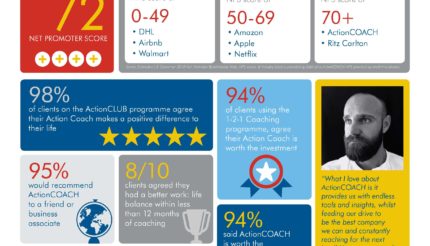I’m often asked about the keys to successful marketing, and people are almost always surprised by my answer. What they expect to hear is that the key is “branding” or having a “witty catch phrase”. In reality, the answer is much simpler than all that. It’s called testing and measuring. Most people hate it. That’s because it means ‘there is a chance, however remote, that every marketing strategy you try will not work the first time’. In other words, it’s possible you’ll spend money without seeing any returns.
But consider this – you’ve probably been testing and measuring all your business life.
Remember the newspaper advertising you tried that ‘didn’t work’, and the radio spots that ‘did OK’.
That’s all testing is… Testing what works and what doesn’t…
The next step is to do it properly; here’s the five steps to successfully working out what ‘works’ and what doesn’t…
- Start asking people where they heard about you.
Start right NOW, immediately. If there’s one thing I stress to business owners when consulting with them, it’s this – if you don’t know what’s working and what’s not, you can’t possibly make informed decisions and you’ll never know which ads to run. You may keep running an ad that never brings a sale, and accidentally kill a good one.
Customers usually come from so many sources, it’s impossible to judge how an ad is working on sales alone. You need to find out for sure. Create a record sheet, including the ways someone could hear about you – website , direct mail, fliers, referrals, walk-by traffic, social media platforms etc.
Every time someone buys, ask them this question – “By the way, can I just ask where you heard about my business?’.
Keep track, and ensure every member of your team does the same. At the end of 14 or 28 days, add up your figures.
Now you can start making decisions…

2. Prune, modify and increase.
The first thing to do is see what’s not working. If strategy is getting a very low response (which means the profit margin from the sales is not at least paying for the strategy), stop it straight away.
Now you only have one option – improve your strategy to ensure you get a great response.
There’s a few things you can do to make the task simpler.
- Go back over your past strategies and think about how well each one worked. Pull out the best couple and see if you can pick what gave them their edge.
- Next, read a couple of books, or at least flick through them.
- Last, look at what your competitors are doing. Do they have anything on a regular basis? What can you learn from it?
Go through this process with each marketing piece you are currently using… stop, examine, modify… stop, examine, modify… Remember – the true test of a marketing strategy is whether it pays for itself.
Also run through each of the strategies you know are working in depth, examining why these are producing results and the others aren’t. See if you can pick the one important attractive point about each. This in itself will teach you a massive amount about your business.
Next, think of a way to use each strategy that is working on a larger scale. If it’s fliers, the answer is simple – drop twice as many fliers. That should bring twice the sales. If it’s a google ad, run it more, or increase its size. If it’s in a phone directory, book a bigger space next time.
But whatever you do, don’t meddle – just do the same thing on a larger scale.

- Test and measure for another two weeks.
Measure the enquiries with the new revised strategies. Also compare this with how much you’re spending on marketing.
You’ll probably find you barely miss those dud strategies and the ‘larger scale’ working strategies are paying out nicely indeed. If it’s not, return to the original size.
- Check your conversion.
Conversion is the number of enquiries that become sales… So many times when analyzing a business, I discover that poor marketing is not the problem – it’s inadequate sales techniques. There are stacks of businesses that have ample leads, but no skill to make them sales.
Be honest with yourself – how many leads do you convert into sales? Is it possible to increase this ratio, even just a little? … In almost every case, it is.
You just have to give the customer a reason to buy from your business. Price is not the only reason a customer spends with your business. What if the salesperson at the more expensive shop actually took an interest in your needs? And what if they were that little bit friendlier? And what if they were willing to back their product with a guarantee? And what if they offered free delivery? All of these ‘what ifs’ add up, and can tip the sale your way.

- Consolidate
Leave it for a month or so, just working on converting the supply of leads you have. A better conversion technique, plus more leads from bigger scale successful marketing strategies should give your business a boost.
- Branch out.
Remember all those marketing strategies you examined and modified? Now is the time to pull them out of the drawer, and give them a run.
Do one at a time, and track the result meticulously. Note down exactly how many leads it brings you, and how many of those turn into sales. Compare that with the marketing cost, and judge whether it has been a good strategy.
If so, add it to your list of ongoing strategies. If not, try it again – testing a different headline, medium, offer, look etc… If it doesn’t work again, give it another try…
Very soon, you’ll develop a collection of marketing strategies that work, and weed out all the costly ones. Now that’s a business success formula!







I don’t think the title of your article matches the content lol. Just kidding, mainly because I had some doubts after reading the article. https://www.binance.info/id/join?ref=YY80CKRN
Your article helped me a lot, is there any more related content? Thanks!